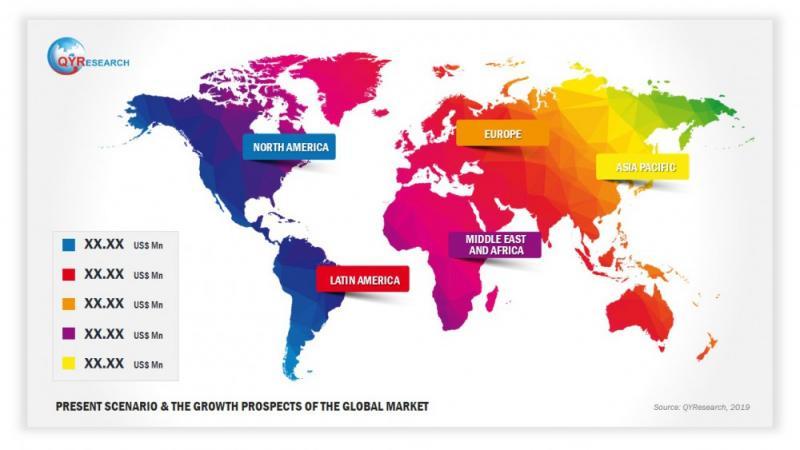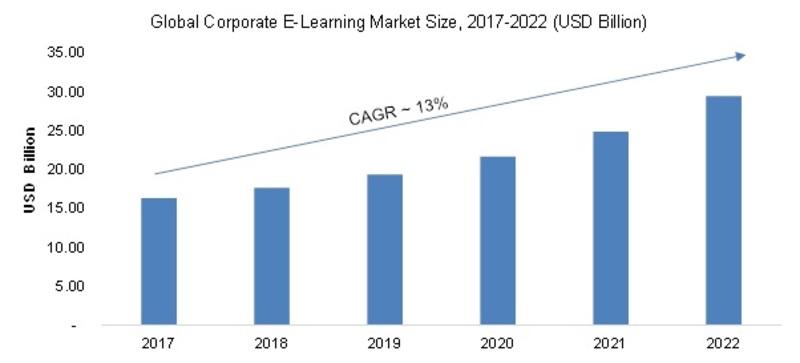Press release
Bio-refinery Market Demand will reach a value of US$ 267.2 Bn by the end of 2031
The bio-refinery market was valued at US$ 122.0 Bn in 2022 and is estimated to expand at a CAGR of 9.1% during the forecast period from 2023 to 2031.
An increase in practice of conversion of waste into energy to meet energy needs is driving the bio-refinery market. At present, energy requirements of various end-use industries are dependent on fossil fuels. The need to lower greenhouse gas emissions and reduce dependence on fossil fuels is likely to augment market size.
A rise in awareness about the effective utilization of biomass to produce value-added chemicals and energy products for future sustainability is expected to propel market expansion during the forecast period.
Growth Drivers
Increase in practice of conversion of waste into energy to reduce the dependence on fossil fuels for energy needs is driving the bio-refinery market
Advantages of efficient and cost-effective production processes due to technological advancements in bio-refineries are boosting growth
Request for a Sample PDF Report with Latest Industry Insights: https://www.transparencymarketresearch.com/sample/sample.php?flag=S&rep_id=85521&utm_source=openpr_Kaustubh&utm_medium=openpr_Kaustubh
Key Findings of Market Study
Implementation of Stringent Environment Regulations - Uncontrolled use of petroleum-based fuels and other products has led to a significant decline of the environment in the last few decades. This has compelled regulatory bodies of several countries to adopt measures to minimize greenhouse gas emissions. Consequently, an increase in shift from fossil-based fuels to environment-friendly fuels is attracting investments in cleaner fuels to reduce carbon emissions.
Usage of renewable sources of energy to produce energy and other materials is increasing in several countries. Usage of biomass to produce biofuels, biogas, and other bio-based products is being promoted by environmental agencies in these countries. This, in turn, is augmenting the demand for bio-refineries.
Advancements in Technology - Integration of advanced technology in bio-refineries has led to efficient and cost-effective production processes. These advantages are attracting investments in bio-refineries and are thus enabling large-scale operations. This entails development of advanced bioprocessing technologies such as fermentation, separation, and enzymatic hydrolysis to convert biomass into high-value products. Consequently, this has led to an increase in yield, minimization of waste, and decrease in processing time.
Increase in integration of bio-refinery with renewable energy is leading to reduced dependence on fossil fuels and improved sustainability. This has led to diversification of product offerings, increased investment, higher efficiency and lower costs, and positive impact on rural economies. Thus, integration of advanced technologies is fueling bio-refinery industry growth.
Commercial Scale Usage of Non-food Feedstock - In terms of type, the second generation segment accounted for the leading share of the global market in 2022. Agricultural and forestry residues, biomass waste, and municipal solid waste are some of the non-food feedstock used in second generation bio-refineries. These are widely available and are not dependent on food production.
Additionally, commercial scale usage of these feedstock to produce biofuels and bioproducts is fueling the second generation segment of the bio-refinery market. Second generation bio-refineries are considered more sustainable compared to first-generation ones, as they do not use food crops as feedstock, which could affect the availability of agricultural land, thus leading to food security issues.
Need to Reduce Waste and Greenhouse Gas Emissions - Based on feedstock, the residues segment held the leading market share in 2022. Utilization of residues as feedstock offers benefits such as sustainable agriculture and forestry practices, reduction of waste and greenhouse gas emissions, and low cost. The residues segment is divided into oil-based, lignocellulosic-based, organic-based, and others.
Production of Higher Energy Yields - In terms of technology, the thermochemical segment held the leading share of the global market in 2022. The thermochemical process uses heat and chemical reactions to convert biomass into biofuels and value-added chemicals. Gasification, liquefaction, and pyrolysis are some examples of thermochemical conversion processes.
Thermochemical conversion technologies offer a range of advantages over other bio-refinery technologies in terms of ability to handle a range of feedstock, produce higher energy yield, and provision to utilize byproducts.
Regional Landscape
According to the analysis of the recent bio-refinery market trends, North America held the leading market share in 2022. This can be ascribed to the region's front line position in bio-refinery research and development. North America has been at the forefront in the development of new and innovative technologies for the conversion of biomass into bio-based products. The U.S. and Canada are home to some of the leading bio-refinery companies.
The bio-refinery market is segmented as follows;
Global Bio-refinery Market, by Type
First Generation
Second Generation
Third Generation
Global Bio-refinery Market, by Feedstock
Dedicated Crops
Oil Crops
Starch Crops
Sugar Crops
Lignocellulosic Crops
Others
Residues
Lignocellulosic-based
Oil-based
Organic-based
Others
Global Bio-refinery Market, by Technology
Thermochemical
Biochemical
Chemical
Physical/Mechanical
Global Bio-refinery Market, by Product
Energy
Chemical
Material
Others
Global Bio-refinery Market, by Region
North America
Europe
Asia Pacific
Latin America
Middle East & Africa
Buy this Premium Research Report: https://www.transparencymarketresearch.com/checkout.php?rep_id=85521<ype=S&utm_source=openpr_Kaustubh&utm_medium=openpr_Kaustubh
About Transparency Market Research
Transparency Market Research, a global market research company registered at Wilmington, Delaware, United States, provides custom research and consulting services. Our exclusive blend of quantitative forecasting and trends analysis provides forward-looking insights for thousands of decision makers. Our experienced team of Analysts, Researchers, and Consultants use proprietary data sources and various tools & techniques to gather and analyses information.
Our data repository is continuously updated and revised by a team of research experts, so that it always reflects the latest trends and information. With a broad research and analysis capability, Transparency Market Research employs rigorous primary and secondary research techniques in developing distinctive data sets and research material for business reports.
Contact:
Transparency Market Research Inc.
CORPORATE HEADQUARTER DOWNTOWN,
1000 N. West Street,
Suite 1200, Wilmington, Delaware 19801 USA
Tel: +1-518-618-1030
USA - Canada Toll Free: 866-552-3453
Website: https://www.transparencymarketresearch.com
An increase in practice of conversion of waste into energy to meet energy needs is driving the bio-refinery market. At present, energy requirements of various end-use industries are dependent on fossil fuels. The need to lower greenhouse gas emissions and reduce dependence on fossil fuels is likely to augment market size.
A rise in awareness about the effective utilization of biomass to produce value-added chemicals and energy products for future sustainability is expected to propel market expansion during the forecast period.
Growth Drivers
Increase in practice of conversion of waste into energy to reduce the dependence on fossil fuels for energy needs is driving the bio-refinery market
Advantages of efficient and cost-effective production processes due to technological advancements in bio-refineries are boosting growth
Request for a Sample PDF Report with Latest Industry Insights: https://www.transparencymarketresearch.com/sample/sample.php?flag=S&rep_id=85521&utm_source=openpr_Kaustubh&utm_medium=openpr_Kaustubh
Key Findings of Market Study
Implementation of Stringent Environment Regulations - Uncontrolled use of petroleum-based fuels and other products has led to a significant decline of the environment in the last few decades. This has compelled regulatory bodies of several countries to adopt measures to minimize greenhouse gas emissions. Consequently, an increase in shift from fossil-based fuels to environment-friendly fuels is attracting investments in cleaner fuels to reduce carbon emissions.
Usage of renewable sources of energy to produce energy and other materials is increasing in several countries. Usage of biomass to produce biofuels, biogas, and other bio-based products is being promoted by environmental agencies in these countries. This, in turn, is augmenting the demand for bio-refineries.
Advancements in Technology - Integration of advanced technology in bio-refineries has led to efficient and cost-effective production processes. These advantages are attracting investments in bio-refineries and are thus enabling large-scale operations. This entails development of advanced bioprocessing technologies such as fermentation, separation, and enzymatic hydrolysis to convert biomass into high-value products. Consequently, this has led to an increase in yield, minimization of waste, and decrease in processing time.
Increase in integration of bio-refinery with renewable energy is leading to reduced dependence on fossil fuels and improved sustainability. This has led to diversification of product offerings, increased investment, higher efficiency and lower costs, and positive impact on rural economies. Thus, integration of advanced technologies is fueling bio-refinery industry growth.
Commercial Scale Usage of Non-food Feedstock - In terms of type, the second generation segment accounted for the leading share of the global market in 2022. Agricultural and forestry residues, biomass waste, and municipal solid waste are some of the non-food feedstock used in second generation bio-refineries. These are widely available and are not dependent on food production.
Additionally, commercial scale usage of these feedstock to produce biofuels and bioproducts is fueling the second generation segment of the bio-refinery market. Second generation bio-refineries are considered more sustainable compared to first-generation ones, as they do not use food crops as feedstock, which could affect the availability of agricultural land, thus leading to food security issues.
Need to Reduce Waste and Greenhouse Gas Emissions - Based on feedstock, the residues segment held the leading market share in 2022. Utilization of residues as feedstock offers benefits such as sustainable agriculture and forestry practices, reduction of waste and greenhouse gas emissions, and low cost. The residues segment is divided into oil-based, lignocellulosic-based, organic-based, and others.
Production of Higher Energy Yields - In terms of technology, the thermochemical segment held the leading share of the global market in 2022. The thermochemical process uses heat and chemical reactions to convert biomass into biofuels and value-added chemicals. Gasification, liquefaction, and pyrolysis are some examples of thermochemical conversion processes.
Thermochemical conversion technologies offer a range of advantages over other bio-refinery technologies in terms of ability to handle a range of feedstock, produce higher energy yield, and provision to utilize byproducts.
Regional Landscape
According to the analysis of the recent bio-refinery market trends, North America held the leading market share in 2022. This can be ascribed to the region's front line position in bio-refinery research and development. North America has been at the forefront in the development of new and innovative technologies for the conversion of biomass into bio-based products. The U.S. and Canada are home to some of the leading bio-refinery companies.
The bio-refinery market is segmented as follows;
Global Bio-refinery Market, by Type
First Generation
Second Generation
Third Generation
Global Bio-refinery Market, by Feedstock
Dedicated Crops
Oil Crops
Starch Crops
Sugar Crops
Lignocellulosic Crops
Others
Residues
Lignocellulosic-based
Oil-based
Organic-based
Others
Global Bio-refinery Market, by Technology
Thermochemical
Biochemical
Chemical
Physical/Mechanical
Global Bio-refinery Market, by Product
Energy
Chemical
Material
Others
Global Bio-refinery Market, by Region
North America
Europe
Asia Pacific
Latin America
Middle East & Africa
Buy this Premium Research Report: https://www.transparencymarketresearch.com/checkout.php?rep_id=85521<ype=S&utm_source=openpr_Kaustubh&utm_medium=openpr_Kaustubh
About Transparency Market Research
Transparency Market Research, a global market research company registered at Wilmington, Delaware, United States, provides custom research and consulting services. Our exclusive blend of quantitative forecasting and trends analysis provides forward-looking insights for thousands of decision makers. Our experienced team of Analysts, Researchers, and Consultants use proprietary data sources and various tools & techniques to gather and analyses information.
Our data repository is continuously updated and revised by a team of research experts, so that it always reflects the latest trends and information. With a broad research and analysis capability, Transparency Market Research employs rigorous primary and secondary research techniques in developing distinctive data sets and research material for business reports.
Contact:
Transparency Market Research Inc.
CORPORATE HEADQUARTER DOWNTOWN,
1000 N. West Street,
Suite 1200, Wilmington, Delaware 19801 USA
Tel: +1-518-618-1030
USA - Canada Toll Free: 866-552-3453
Website: https://www.transparencymarketresearch.com
Permanent link to this press release:
Copy
Please set a link in the press area of your homepage
to this press release on woodPRI. woodPRI disclaims liability for any content contained in
this release.
Recommend

/newsMicroencapsulation Market Deep Analysis on Key Players - Dow Corning, Encapsys, Syngenta Crop Protection, Evonik Industries, 3M and Bayer
Market Study Report Adds Global Microencapsulation Market Size, Status and Forecast 2024 added to its database. The report provides key statistics on the current state of the industry and other analytical data to understand the market.
Extensive research is required for choosing the appropriate cor...

/newsGermany Airbag Market Size 2023: Global Share, Industry And Report Analysis By 2030 | Hyundai Mobis Co., Ltd. Key Safety Systems, Inc. Robert Bosch GmbH
Germany airbag market is expected to grow at a CAGR of around 6% during the forecast period. Germany Airbag Market research report refers to gathering and analyzing significant market data serve as best medium for various industry players to launch novel product or service. It is vital for key firms...

/newsSecurities Brokerages And Stock Exchanges Market Outlook 2021: Big Things are Happening
A new intelligence report released by HTF MI with title "Global Securities Brokerages And Stock Exchanges Market Survey & Outlook" is designed covering micro level of analysis by Insurers and key business segments, offerings and sales channels. The Global Securities Brokerages And Stock Exchange...

/newsRenewable Chemicals Market Emerging Trends and Competitive Landscape Forecast to 2028
The renewable chemicals market was valued at US$ 80,566.30 million in 2021 and is projected to reach US$ 1,76,750.76 million by 2028 it is expected to grow at a CAGR of 11.9% from 2021 to 2028. The research report focuses on the current market trends, opportunities, future potential of the market, a...

/newsHow Coronavirus is Impacting Cold Brew Coffee, Global Market Volume Analysis, Size, Share and Key Trends 2020-2026
"Market Latest Research Report 2020:
Los Angles United States, February 2020: The Cold Brew Coffee market has been garnering remarkable momentum in the recent years. The steadily escalating demand due to improving purchasing power is projected to bode well for the global market. QY Research's lates...

/newsCorporate E-Learning Market - Global Industry Size, Share, Key Players Analysis that are Infor, SkillSoft Corporation, Adrenna, CERTPOINT Systems and others with Regional Forecast to 2022
Overview:
E-Learning is used to enhance the learning procedures for newer job requirements and to make employees sound about the internal and external changes in the market and respective organizations. This method has created considerable differences in the ways of training and developing employee...